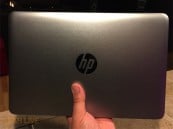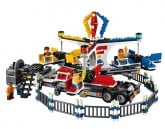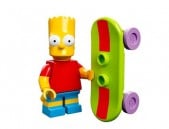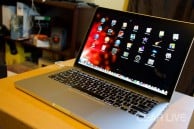Latest Gear Live Videos
Tuesday July 11, 2006 4:36 am
Effects vs. Gameplay Physics
 As game developers look toward the future for new ways to enhance the gaming experience, one of the areas of focus has been physics acceleration. HardOCP recently was able to talk with the big players in the field to try and map out the state of the field. Right now there are basically two camps. First, graphics card manufacturers like ATI and nVidia are offering GPU based solutions. ATI’s Crossfire configurations allow gamers to utilize a single ATI graphics card as a physics accelerator paired with another card. nVidia will also offer GPU-based physics acceleration, but this will be integrated on a card with other shader effects. nVidia has announced that they will be working with the HavokFX engine from Havok, and it is highly likely that ATI will do the same. On the other side of the fence, Ageia offers a dedicated physics acceleration card, PhysX, with their own API. All four players submit their perspective on the burgeoning market.
As game developers look toward the future for new ways to enhance the gaming experience, one of the areas of focus has been physics acceleration. HardOCP recently was able to talk with the big players in the field to try and map out the state of the field. Right now there are basically two camps. First, graphics card manufacturers like ATI and nVidia are offering GPU based solutions. ATI’s Crossfire configurations allow gamers to utilize a single ATI graphics card as a physics accelerator paired with another card. nVidia will also offer GPU-based physics acceleration, but this will be integrated on a card with other shader effects. nVidia has announced that they will be working with the HavokFX engine from Havok, and it is highly likely that ATI will do the same. On the other side of the fence, Ageia offers a dedicated physics acceleration card, PhysX, with their own API. All four players submit their perspective on the burgeoning market.
It is interesting to see how each company seeks to address the problem. The overall conclusion is that early efforts will focus on effects physics; things like debris and environmental effects that don’t impact gameplay but can enhance the experience. There just isn’t enough market penetration at this point to offer anything more. As the market matures and physics acceleration is more commonplace, it will start to make more sense for developers to attack gameplay physics. This strategy will benefit companies like ATI and nVidia; they currently make great graphics acceleration cards with the potential to accelerate physics in the future. Ageia is kind of in a bind with the PhysX card; it could offer greater environmental gameplay, but needs developer support. By the time the market reaches the user saturation where gameplay physics makes sense, ATI and nVidia could both have better on-board solutions for physics acceleration, leaving Ageia behind.
Read More  | HardOCP
| HardOCP
- Related Tags:
Advertisement
Advertisement
Advertisement
© Gear Live Media, LLC. 2007 – User-posted content, unless source is quoted, is licensed under a Creative Commons Public Domain License. Gear Live graphics, logos, designs, page headers, button icons, videos, articles, blogs, forums, scripts and other service names are the trademarks of Gear Live Inc.











Comments: